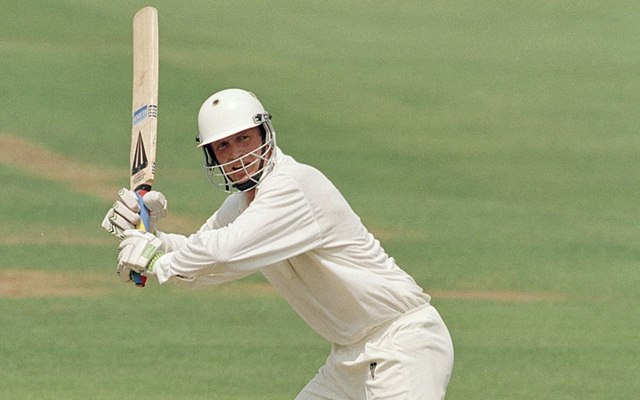July 27, 1990 – When Tom Moody sleepwalked to a 36-ball century
Moody's hundred might not have come in a winning cause but did earn him the prestigious Walter Lawrence Trophy.
2 Min Read


The importance of results in County Cricket match is unmatchable when compared to any other first-class domestic competition and is visible in the efforts and plans put in by the teams. The teams strive to place themselves at the top and sometimes have to work out strategies to tackle the weather conditions as well. There have been instances where both the teams playing a game discuss and plan the game accordingly to produce a result. One such instance was recorded during the 1990 Championship match between Glamorgan and Warwickshire.
The visiting side elected to bat first at St Helen’s in Swansea and posted a big total on the first day. Opener Andrew Moles’ unbeaten 224 and his partner along with captain Timothy Lloyd’s 101 helped Warwickshire declare their innings on 443/3 on the first day. Hug Morris scored 106 for the home team and with contributions from other players they were boosted to 393/7.
Glamorgan made an interesting decision to declare their innings despite being 70 runs behind Warwick’s total. The visiting side was reduced to 16/2 in the last few minutes of day two before the game resumed in an exciting way. Glamorgan opted for ‘declaration bowling’ tactic where their skipper Alan Butcher used some of his part-timers who could give away quick runs so that Warwickshire would declare their innings having gained a feasible lead.
A record that wasn’t considered good enough by many
The batting side lost their 3rd wicket at 81 and Tom Moody was slated to bat at No.5. The Australian, who was new to this situation, was delivered the instruction to score as many runs as possible. Moody walked to the crease to face the medium pacer Matthew Maynard and off-spinner Tony Cottey. Both the players hardly bowled during their first-class careers – the average number of balls they bowled every match was almost six.
Moody ensured he made most of the scoring opportunities as he raced to a fifty in just 11 minutes. The Australian all-rounder needed 15 minutes for his second fifty as he reached triple digits in only 36 balls. His century was the then fastest in first-class cricket history in terms of time taken and the 2nd fastest in terms of balls. Glen Chapple (27 balls; 21 minutes), Mark Pettini (27 balls; 24 minutes) Murray Goodwin (32 balls; 25 minutes) surpassed Moody’s century in terms of both balls and minutes.
Tom Moody’s effort in vain
However, none of these centuries is considered in an authentic list by many people given the circumstances of the game. David Hookes’ 34-ball hundred is the fastest FC ton in those lists as scored that in a 1982/83 Sheffield Shield game. During his quick-fire century, Moody punished Maynard the most as he conceded 89 runs in his six overs. Warwickshire declared their innings at 212/3 after batting 37 overs to set the home team a target of 283.
Butcher led them from the front with a 116-run knock while Sir Vivian Richards took them home with an unbeaten 65 batting along with Maynard who scored 56. Glamorgan got to the target in 54.4 overs with five wickets in hand. Moody’s hundred might not have come in a winning cause but did earn him the prestigious Walter Lawrence Trophy which is awarded for the fastest century recorded across all formats in terms of balls faced.
For all the latest cricket news and other updates follow CricTracker.
Download Our App